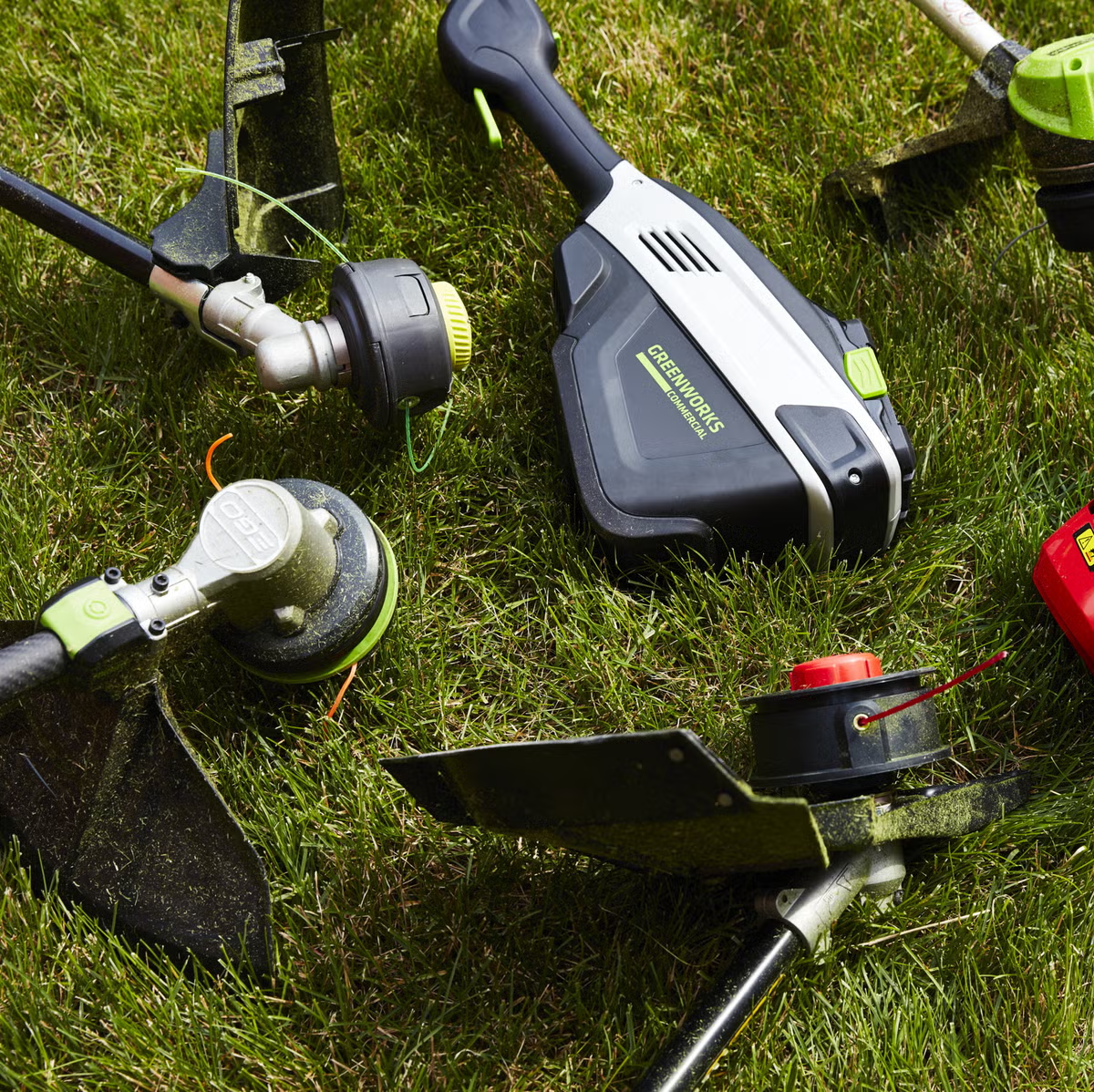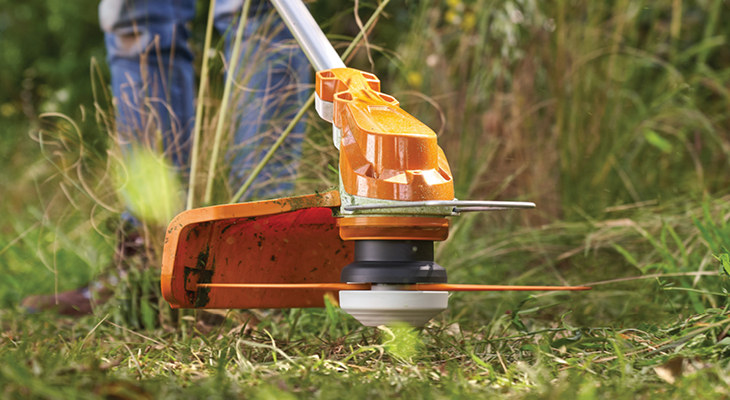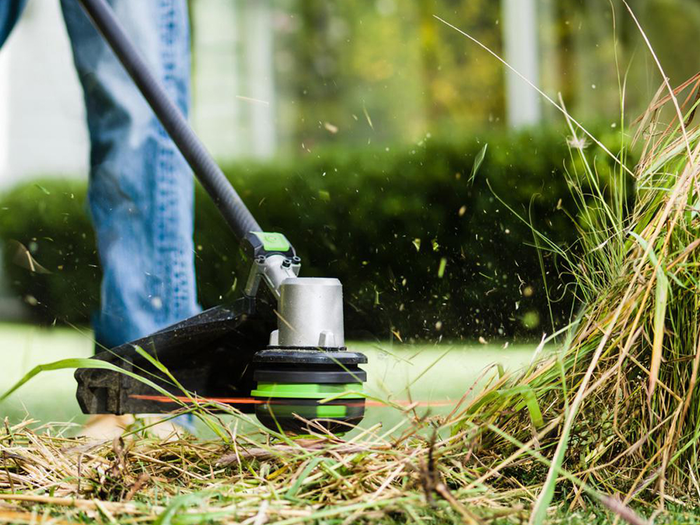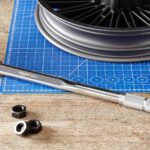Cordless string trimmers, also known as weed whackers or weed eaters, are versatile outdoor power tools designed for trimming grass, weeds, and light vegetation around areas that lawnmowers can’t reach. Unlike their gas-powered or corded counterparts, cordless string trimmers run on rechargeable batteries, offering several advantages.
The primary benefit of cordless string trimmers is their portability and ease of use. Without the need for a power cord or gas tank, these tools provide unparalleled freedom of movement, allowing you to trim effortlessly around trees, fences, flower beds, and other obstacles. The absence of a cord or gas emissions also makes them more environmentally friendly and quieter in operation.
Another significant advantage of cordless string trimmers is their low maintenance requirements. With no need for tune-ups, spark plugs, or air filters, these tools are incredibly convenient and require minimal upkeep. Additionally, they eliminate the hassle of mixing gas and oil, as well as the potential for spills or fumes associated with gas-powered trimmers.
Cordless string trimmers have come a long way in terms of power and runtime, with modern lithium-ion batteries providing ample cutting power and extended operation on a single charge. Many models now offer performance comparable to their gas-powered counterparts, making them a viable option for homeowners and professionals alike.
Table of Contents
Types of Cordless String Trimmers
Cordless string trimmers come in various types, offering different power sources, cutting widths, shaft designs, and other features to suit various yard care needs. Here are some of the most common types:
Battery Voltage: Cordless trimmers are available in different battery voltages, typically ranging from 18V to 80V. Higher voltage batteries generally provide more power and longer runtime but are also heavier and more expensive.
Lithium-Ion vs. Lead-Acid Batteries: Most modern cordless trimmers use lithium-ion batteries, which are lighter, more efficient, and have a longer lifespan than lead-acid batteries. However, lead-acid batteries are often more affordable.
Cutting Width: The cutting width of a string trimmer determines the size of the area it can cover in a single pass. Common cutting widths range from 10 to 18 inches, with wider trimmers being more efficient for large areas but less maneuverable in tight spaces.
Curved vs. Straight Shaft: Curved shaft trimmers are designed for trimming and edging, while straight shaft trimmers are better suited for taller weeds and grass, as well as reaching under shrubs and other tight spaces.
Single-Line vs. Dual-Line: Single-line trimmers have one cutting line, while dual-line trimmers have two lines for increased cutting width and efficiency. Dual-line trimmers are generally more powerful but can be harder to maneuver.
Attachment-Capable: Some cordless string trimmers are part of a broader system that allows you to swap out the trimmer head for other attachments, such as edgers, cultivators, or pole saws, providing versatility for various yard care tasks.
Weight and Balance: The weight and balance of a cordless trimmer can significantly impact user comfort and fatigue during extended use. Lightweight and well-balanced models are generally preferred for ease of use.
These are just a few of the variations available in cordless string trimmers. Consider your yard size, terrain, and personal preferences when choosing the type that best suits your needs.

Battery Life and Runtime
Battery life and runtime are crucial factors to consider when choosing a cordless string trimmer. These trimmers rely on rechargeable lithium-ion batteries, which provide a limited amount of runtime before needing to be recharged. Several factors can affect battery life and runtime, including battery capacity, trimmer power, and usage conditions.
Battery capacity is typically measured in amp-hours (Ah) or watt-hours (Wh), and it determines how much charge the battery can hold. Generally, higher capacity batteries will provide longer runtimes, but they also tend to be heavier and more expensive. Most cordless string trimmers have batteries ranging from 2.0Ah to 5.0Ah, with runtimes varying from 30 minutes to over an hour on a single charge.
The power of the trimmer also plays a significant role in battery life. More powerful trimmers with higher cutting speeds and thicker line diameters will drain the battery faster than less powerful models. Additionally, factors like thick or dense vegetation, wet grass, and hilly terrain can increase the load on the trimmer, leading to shorter runtimes.
To maximize battery performance and runtime, there are several tips to follow:
- Use the appropriate line diameter: Thicker lines require more power and will drain the battery faster. Use the recommended line diameter for your trimmer and the type of vegetation you’re cutting.
- Keep the trimmer and battery cool: High temperatures can reduce battery life and performance. Avoid prolonged use in direct sunlight or hot conditions, and allow the battery to cool down before recharging.
- Charge the battery properly: Follow the manufacturer’s instructions for charging the battery. Avoid overcharging or completely draining the battery, as this can shorten its lifespan.
- Consider purchasing an extra battery: Having a spare battery on hand allows you to swap them out and continue working without waiting for a recharge.
- Maintain the trimmer and battery: Clean the trimmer regularly, and ensure the battery contacts are free from debris. Store the battery in a cool, dry place when not in use.
By understanding the factors affecting battery life and runtime, and following best practices for battery maintenance and usage, you can maximize the performance and efficiency of your cordless string trimmer.

Cutting Power and Performance
Cordless string trimmers have come a long way in terms of cutting power and performance, closing the gap with their gas-powered counterparts. While gas models still hold an edge in raw cutting power, the latest cordless trimmers can handle most residential and light commercial applications with ease.
The cutting ability of a cordless trimmer is primarily determined by its motor size and the thickness of the trimmer line. Higher-end models often feature brushless motors, which deliver more torque and runtime compared to traditional brushed motors. Line thickness can range from 0.065 inches to 0.095 inches, with thicker lines providing more cutting power but also putting more strain on the motor.
For typical lawn trimming tasks around the yard, a cordless trimmer with a 20V or 40V battery and a 0.080-inch line should suffice. However, if you have a larger property or need to tackle tougher weeds and overgrown areas, a 60V or 80V model with a 0.095-inch line would be a better choice. These higher-voltage trimmers can rival the cutting power of some gas trimmers, making them suitable for professional landscaping applications.
It’s important to note that cutting power and performance can also be affected by factors such as battery charge level, trimmer head design, and the user’s technique. Proper maintenance, including keeping the trimmer line sharp and replacing it when necessary, can also help maintain optimal cutting performance.
Ease of Use and Ergonomics
Cordless string trimmers are designed with user-friendliness and ergonomics in mind, ensuring a comfortable and efficient trimming experience. Many models feature lightweight and well-balanced designs, reducing fatigue during extended use. Adjustable handles, telescopic shafts, and pivoting heads allow users to customize the trimmer’s position for optimal comfort and control.
Top brands like Ego, Greenworks, and DeWalt have models with ergonomic features like soft-grip handles, padded straps, and vibration-dampening technologies. These features minimize hand and arm strain, making it easier to maneuver the trimmer for precise trimming around edges, fences, and landscaping.
Some cordless string trimmers offer easy-feed systems for the trimmer line, eliminating the hassle of manually advancing the line. Additionally, many models have simple push-button start mechanisms, eliminating the need for pull-cords found in gas-powered trimmers.
Overall, the ease of use and ergonomic designs of cordless string trimmers make them an attractive option for homeowners and professionals alike, providing a comfortable and efficient trimming experience without the hassle of cords or excessive weight.
Safety Features
Cordless string trimmers prioritize safety through various features designed to protect users and bystanders. One of the most crucial safety components is the guard shield, a durable plastic or metal barrier that surrounds the trimmer head. This shield prevents debris, rocks, and other objects from being thrown towards the operator or nearby people and property.
Another essential safety feature is the automatic line feed system. This mechanism automatically advances the trimmer line as it wears down, eliminating the need for manual line adjustment and reducing the risk of injury from handling the hot trimmer head or sharp line.
Many cordless string trimmers also incorporate anti-vibration systems to minimize fatigue and discomfort during extended use. These systems use specialized dampeners or counterweights to absorb vibrations, reducing the strain on the user’s hands, arms, and body.
In addition to these core safety features, some models offer additional safeguards like blade brake systems that quickly stop the trimmer head rotation when the trigger is released, preventing accidental injuries. Ergonomic designs with well-balanced weight distribution and comfortable grips also contribute to safer operation by reducing user fatigue and improving control.
Manufacturers often include clear safety warnings, instructional labels, and comprehensive user manuals to educate operators on proper usage, maintenance, and safety precautions. Following these guidelines and wearing appropriate protective gear, such as safety glasses, gloves, and sturdy footwear, can further enhance safety when using cordless string trimmers.

Maintenance and Care
Proper maintenance and care are essential for ensuring the longevity and optimal performance of your cordless string trimmer. Here are some tips to keep your trimmer in top condition:
Battery Care: Lithium-ion batteries are the heart of cordless trimmers. Always follow the manufacturer’s instructions for charging and storing the battery. Avoid leaving the battery fully discharged for extended periods, as this can damage the cells. Store the battery in a cool, dry place when not in use.
Cleaning: After each use, clean the trimmer thoroughly to remove grass clippings, dirt, and debris. Use a soft brush or compressed air to clear the vents and motor housing. Avoid using water or harsh chemicals, as they can damage the electrical components.
Spool and Line Replacement: Over time, the trimmer line will wear down and need replacement. Follow the manufacturer’s instructions for properly loading the new line onto the spool. Ensure that the line is correctly routed and trimmed to the recommended length.
Blade Sharpening: If your trimmer has a metal blade attachment, keep it sharp for optimal cutting performance. Use a suitable file or sharpening tool, following the manufacturer’s guidelines for blade sharpening.
Lubrication: Some trimmers may require periodic lubrication of certain components, such as the drive shaft or gearbox. Consult the owner’s manual for specific instructions and recommended lubricants.
Storage: When storing your cordless trimmer for an extended period, remove the battery and clean the unit thoroughly. Store it in a dry, protected area, away from direct sunlight or extreme temperatures.
Inspections: Regularly inspect your trimmer for any signs of wear, damage, or loose components. Tighten any loose screws or bolts, and replace worn or damaged parts as needed.
By following these maintenance and care tips, you can extend the lifespan of your cordless string trimmer and ensure it continues to perform at its best for years to come.
Accessories and Attachments
Cordless string trimmers often come with a range of useful accessories and attachments that can enhance their versatility and performance. One of the most common and essential accessories is replacement spools or trimmer line. As the trimmer line wears down during use, it’s crucial to have spare spools on hand for quick and easy replacement.
Another popular accessory is an edging attachment, which allows you to neatly trim the edges of your lawn, sidewalks, or garden beds. These attachments typically feature a guide wheel or blade that runs along the edge, creating a clean, defined line. Some edging attachments can even be adjusted to different angles for added flexibility.
Many cordless string trimmers also offer attachments that convert them into other useful tools, such as a pole saw or hedge trimmer. These multi-tool systems can save you money and storage space by eliminating the need for separate dedicated tools.
Other common accessories include shoulder straps or harnesses, which can help distribute the weight of the trimmer more evenly and reduce fatigue during extended use. Some trimmers also come with plant guards or debris shields, which can help protect nearby plants or surfaces from flying debris.
Manufacturers often sell specialized trimmer lines or blades designed for specific tasks, such as cutting through thick or woody vegetation. These specialized lines and blades can improve the trimmer’s performance and efficiency in challenging conditions.
Finally, many cordless string trimmers are compatible with various storage and organization accessories, such as wall-mounted brackets or carrying cases, which can help keep your trimmer and accessories neatly organized and easily accessible.
Environmental Impact
Cordless string trimmers offer several environmental advantages over their gas-powered counterparts. Since they run on rechargeable batteries, they produce zero direct emissions during operation, making them an eco-friendly choice for lawn care. This reduction in air pollution and greenhouse gas emissions helps to minimize the carbon footprint of landscaping activities.
Many cordless trimmer manufacturers have implemented eco-friendly features and practices in their products. Some models are designed with recycled or sustainable materials, while others are certified by organizations like EPEAT or Energy Star for their energy efficiency and environmental compliance.
When it comes to battery disposal, responsible practices are essential to prevent environmental harm. Most cordless trimmer batteries are lithium-ion, which should be recycled or disposed of properly at designated facilities. Many manufacturers offer battery recycling programs or partner with organizations that handle safe battery disposal, reducing the risk of hazardous materials contaminating the environment.
Furthermore, the absence of fuel and oil in cordless trimmers eliminates the risk of spills or leaks that can contaminate soil and water sources. This not only protects the environment but also reduces the potential for harmful exposure to users during operation and maintenance.
Overall, cordless string trimmers provide a more sustainable and environmentally-friendly solution for lawn care compared to gas-powered alternatives, contributing to a greener and cleaner future for outdoor spaces.
Top Brands and Models
The cordless string trimmer market is dominated by a few leading brands that have established themselves as reliable and innovative. Here are some of the top brands and their popular models:
EGO Power+: This brand is known for its powerful and long-lasting lithium-ion batteries. The EGO Power+ 15-inch String Trimmer is a popular choice, featuring a brushless motor that delivers gas-like performance and a runtime of up to 60 minutes on a single charge.
Greenworks: Greenworks is a budget-friendly brand that offers a range of cordless tools, including string trimmers. The Greenworks 13-inch 40V Cordless String Trimmer is a lightweight and easy-to-use option with a runtime of up to 30 minutes.
DEWALT: Known for its professional-grade tools, DEWALT offers the 20V MAX XR String Trimmer, which is part of their robust 20V MAX line. This trimmer features a high-efficiency brushless motor and a runtime of up to 60 minutes with a 5.0Ah battery.
Makita: Makita’s cordless string trimmers are designed for durability and performance. The Makita 18V LXT Lithium-Ion Brushless Cordless String Trimmer is a popular choice, boasting a brushless motor for improved efficiency and longer runtime.
BLACK+DECKER: This brand is known for its affordable and user-friendly tools. The BLACK+DECKER 20V MAX Lithium String Trimmer is a lightweight and compact option, ideal for small to medium-sized yards.
Ryobi: Ryobi offers a range of cordless tools, including the Ryobi 18V ONE+ Cordless String Trimmer. This trimmer is part of Ryobi’s interchangeable battery system, allowing you to use the same battery across multiple tools.
Many of these brands offer different models with varying cutting widths, battery capacities, and additional features like adjustable handles, telescoping shafts, and edging capabilities. When choosing a cordless string trimmer, consider factors such as runtime, power, weight, and compatibility with existing battery platforms.
Buying Guide and Tips
When it comes to purchasing a cordless string trimmer, there are several factors to consider to ensure you get the right tool for your needs and budget. Here are some buying tips to keep in mind:
Budget: Cordless trimmers can range in price from around $50 for basic models to over $300 for professional-grade units. Determine your budget and look for a trimmer that offers the features and performance you need without overspending.
Yard Size and Intended Use: If you have a small yard or plan to use the trimmer for light trimming around edges and flower beds, a compact and lightweight model with a smaller battery may suffice. For larger yards or more demanding tasks, consider a trimmer with a higher voltage battery and more cutting power.
Battery Life and Runtime: Check the battery voltage (typically ranging from 18V to 80V) and amp-hours (Ah) to gauge the runtime and power output. Higher voltages and amp-hours generally mean longer runtimes and more cutting power, but also add to the weight and cost.
Cutting Swath and Line Size: A wider cutting swath (typically 10-15 inches) can help you cover more ground faster, while a thicker trimmer line (0.065-0.095 inches) can handle tougher vegetation more effectively.
Ergonomics and Comfort: Look for trimmers with adjustable shaft lengths, pivoting heads, and well-designed handles and grips to reduce fatigue and strain during extended use.
Additional Features: Consider features like variable speed triggers, bump feed line advancement, and telescoping shafts for added convenience and versatility.
Brand and Warranty: Opt for reputable brands known for quality and reliable customer support. Check the warranty coverage, as longer warranties can provide peace of mind and protect your investment.
Remember, the best cordless string trimmer for you will depend on your specific needs, budget, and preferences. Take the time to research and compare different models to find the one that strikes the right balance between performance, convenience, and value.
Comparison with Gas-Powered and Corded Trimmers
Cordless string trimmers offer several advantages over their gas-powered and corded counterparts. In terms of power, modern cordless trimmers can rival the cutting prowess of gas models, thanks to advancements in lithium-ion battery technology and brushless motors. However, gas trimmers still hold an edge when it comes to continuous runtime, as they can be refueled and used indefinitely, while cordless trimmers are limited by battery capacity.
Maintenance is significantly easier with cordless trimmers, as there are no spark plugs, air filters, or carburetor issues to deal with. They also produce zero direct emissions, making them more environmentally friendly and suitable for indoor or enclosed spaces. Gas trimmers, on the other hand, require regular maintenance and produce exhaust fumes.
Corded electric trimmers eliminate the need for batteries or fuel, but their mobility is restricted by the length of the power cord. Cordless trimmers offer unmatched freedom of movement, allowing you to trim and edge without the hassle of managing a cord or refueling.
Noise levels are another crucial consideration. Cordless trimmers are generally quieter than gas models, making them more suitable for residential areas or early morning use. Corded electric trimmers are typically the quietest option, but their limited range can be a drawback.
Overall, cordless string trimmers strike a balance between power, convenience, and environmental friendliness, making them an increasingly popular choice for homeowners and professionals alike.
Future Trends and Innovations
The cordless string trimmer industry is rapidly evolving, driven by advancements in battery technology and a growing demand for eco-friendly and efficient outdoor power tools. One of the most exciting trends is the development of longer-lasting and more powerful lithium-ion batteries. These batteries not only provide extended runtime but also deliver consistent power output throughout their charge cycle, ensuring optimal performance even as the battery drains.
Another area of innovation is the integration of brushless motors into cordless trimmers. Brushless motors are more efficient, generate less heat, and require less maintenance than their brushed counterparts. This technology translates into improved runtime, increased power, and longer overall tool life.
Manufacturers are also exploring ways to make cordless trimmers more user-friendly and versatile. Some models now feature adjustable shaft lengths or telescoping designs, allowing users to customize the trimmer for their height and reach preferences. Additionally, many trimmers are compatible with a range of attachments, such as edgers, pole saws, or cultivators, transforming them into multi-purpose outdoor tools.
The pursuit of quieter operation is another trend in the cordless trimmer industry. Manufacturers are employing advanced sound-dampening technologies and optimizing motor and gear designs to reduce noise levels, making these tools more suitable for use in residential areas or noise-sensitive environments.
Finally, as environmental concerns continue to drive consumer demand for sustainable products, we can expect to see cordless trimmers with eco-friendly features, such as recycled plastic components or biodegradable trimmer lines. Some manufacturers are also exploring the use of renewable energy sources, like solar panels, to charge the batteries, further reducing the environmental impact of these tools.
FAQs and Common Concerns
How long do cordless string trimmer batteries last?
Battery life can vary greatly depending on factors like battery capacity, trimmer power, and usage conditions. Most modern lithium-ion batteries provide 30-60 minutes of runtime on a single charge. However, some high-end models can run for up to 2 hours. Proper battery maintenance, such as avoiding extreme temperatures and fully discharging, can extend battery life.
Are cordless trimmers powerful enough for thick weeds and grass?
While early cordless models lacked power, modern brushless motor technology has significantly improved their cutting ability. High-quality cordless trimmers can handle thick weeds, tall grass, and even light brushy areas with ease. However, for extremely overgrown or woody areas, gas-powered trimmers may still be more suitable.
How do I avoid trimmer lines breaking frequently?
Line breakage can be frustrating, but there are ways to minimize it. Use the recommended line size and type for your trimmer, avoid hitting hard surfaces like concrete or rocks, and ensure the line spool is properly installed and tensioned. Maintaining a steady trimming pace and letting the trimmer do the work can also reduce line breakage.
Is it difficult to maintain and repair cordless trimmers?
Cordless trimmers are generally low-maintenance and easy to care for. Regular cleaning, proper storage, and following the manufacturer’s guidelines are typically all that’s needed. Most parts, like trimmer heads and batteries, are replaceable if they wear out over time. However, attempting complex repairs on your own may void the warranty, so it’s best to consult the manufacturer or a professional repair service.
Are cordless trimmers environmentally friendly?
Compared to gas-powered trimmers, cordless models are generally more eco-friendly. They produce zero direct emissions, generate less noise pollution, and have fewer disposable parts like air filters and spark plugs. However, the environmental impact ultimately depends on the electricity source used to charge the batteries and the manufacturing processes involved.
Conclusion
Cordless string trimmers have come a long way in recent years, offering a convenient, eco-friendly, and powerful alternative to traditional gas-powered or corded models. With their lightweight design, quiet operation, and zero emissions, they are an excellent choice for homeowners and professionals alike, particularly for smaller yards and tight spaces.
One of the primary advantages of cordless string trimmers is their ease of use and maneuverability. Without the hassle of tangled cords or heavy gas tanks, users can move freely and easily around obstacles, making trimming and edging tasks a breeze. Additionally, their low noise levels make them ideal for residential areas or early morning maintenance work.
While battery life and runtime remain a consideration, advancements in lithium-ion technology have significantly improved their performance, allowing many cordless string trimmers to rival their gas-powered counterparts in terms of cutting power and efficiency. With various battery capacities and fast-charging options available, users can choose the right model to suit their needs and minimize downtime.
For those with larger properties or demanding applications, investing in additional batteries or opting for a model with a brushless motor can further extend runtime and enhance overall performance. However, for most homeowners and light commercial use, a standard cordless string trimmer should suffice.
As environmental concerns continue to grow, the adoption of cordless string trimmers can contribute to a greener future by reducing emissions and noise pollution. Their eco-friendly nature, combined with their versatility and ease of use, make them an attractive choice for anyone seeking a convenient and sustainable solution for lawn care and maintenance.


